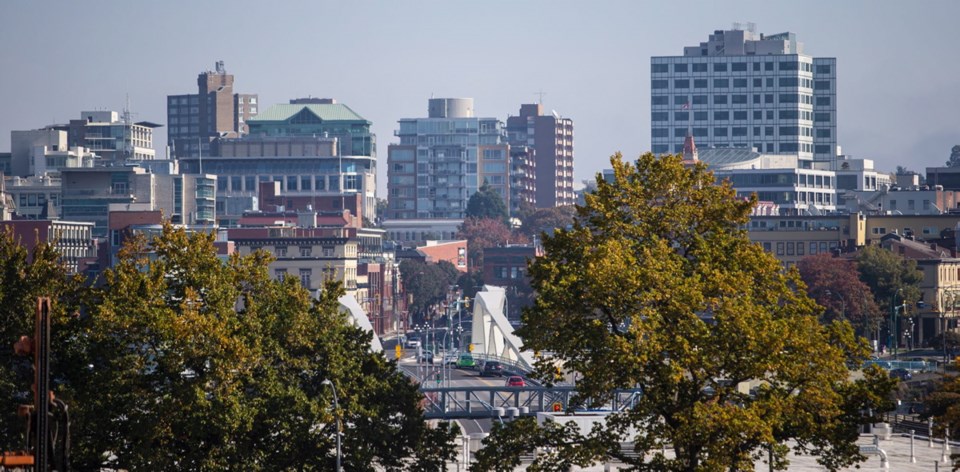Condominiums in Greater Victoria haven’t yet seen massive increases in insurance rates, but it might only be a temporary reprieve, according to experts.
Insurance costs for strata corporations have been skyrocketing in condo-heavy markets such as Vancouver, Toronto and New York, while some buildings have been told flat out their insurance will not be renewed.
“We’ve been surprised at the number of strata corporations seeing increases of between 40 and 60 per cent, but we won’t really know how many will be affected until we’ve had a whole year of this,” said Tony Gioventu, executive director of the Condominium Home Owners’ Association of sa国际传媒 “Everyone won’t have the same extreme increases in insurance costs or deductibles, but I think it will affect everyone.”
The Insurance Brokers Association of sa国际传媒 said it has seen premium increases ranging from 50 per cent to 400 per cent for stratas, and deductibles of $25,000 per claim increasing to between $250,000 and $500,000.
Gioventu said there are 30,000 strata corporations in sa国际传媒 and every month, as many as 2,000 have to renew their insurance. When they do, the association hears about it, especially when the insurance costs have doubled or tripled.
So far this year, hundreds have reported facing massive increases, he said, while 11 learned their insurance would not be renewed at all.
Strata corporations must insure for full replacement value of all common property, common assets and fixtures.
Most of the reports about big increases so far have come from buildings in the Lower Mainland, Gioventu said.
“We haven’t seen the same increases [in Victoria], but I will qualify that by saying ‘yet,’ ” he said. “I expect in a month or two, we will get the same cries from Victoria.”
Sandy Wagner, president of the Vancouver Island Strata Owners Association, said while they’ve had plenty of queries from members, so far they haven’t heard of any “astronomical increases” — possibly because there are fewer high-rise stratas on the Island.
Multiple factors appear to be behind the increases. They range from fewer insurers being able to take on more risk to aging buildings that in some cases haven’t been well maintained, expensive new construction, expensive high-end finishing in those new units and an increase in the number of high-rise developments.
Gioventu said some new buildings have been hard hit because the cost of building replacement and finishings is so high.
That’s especially true of high-rises where a common problem such as water damage tends to affect multiple floors, inflating any claim.
“There have been new buildings that have just come on the market where the owner-developer had estimated $300,000 for insurance in the first year and just found out it will be $1.5 million,” he said.
“Now, within a year of moving in, [new owners] are facing strata fees that are now $300 to $400 higher per month.”
Wagner said they’ve been told that strata insurance has been underpriced for years and the industry is looking to recoup its losses.
“Currently, insurers are paying out more in claims than they are taking in premiums and so they are passing it along,” she said. “The very high premium increases of 40 per cent or more are mostly directed to stratas with multiple claims, and most specifically water claims.”
Stratas that are meeting their repair and maintenance obligations are seeing the smallest increases, she said.
Tara Paddon, managing director of strata property management for Pemberton Holmes, said the company has seen some significant insurance increases, mainly in larger stratas, and those that have previously filed significant claims.
The buildings most susceptible to massive increases appear to be new high-rises, large resort complexes, any strata with more than 300 units and buildings that have not been well maintained.
To help deal with the issue, the Insurance Brokers Association of sa国际传媒 is suggesting that limits be placed on what’s covered by a strata’s insurance.
For example, a definition for a “standard unit” could include items such as walls, ceilings, drywall, sub-floor, basic electrical, plumbing and some heating, ventilation and air-conditioning components, but not finishing items such as flooring, countertops, fixtures, appliances and upgrades.
Gioventu suggested changes to the building code to address problem areas — a requirement for floor drains near water systems, for example — or legislation to limit the risks stratas are exposed to.
“But there is no quick fix to this,” he said.



